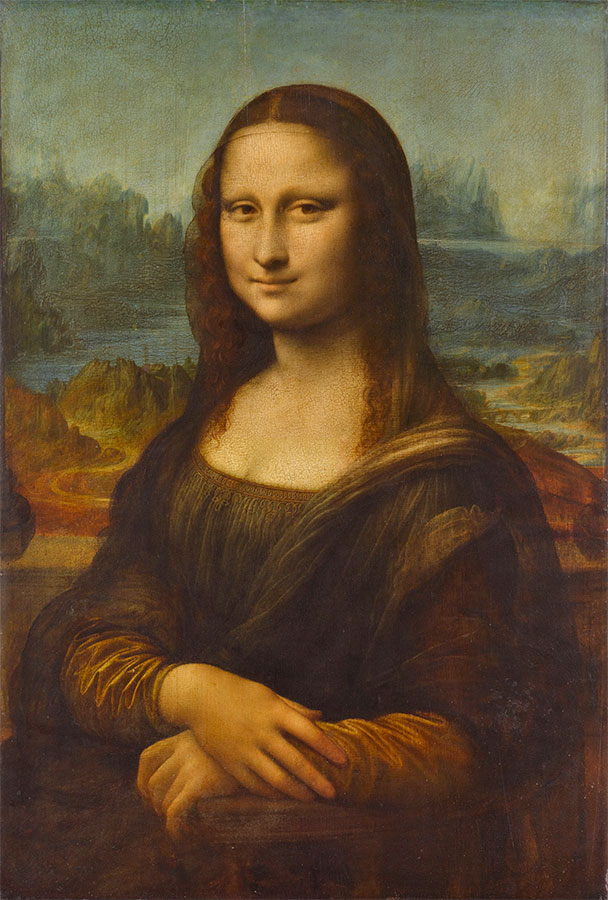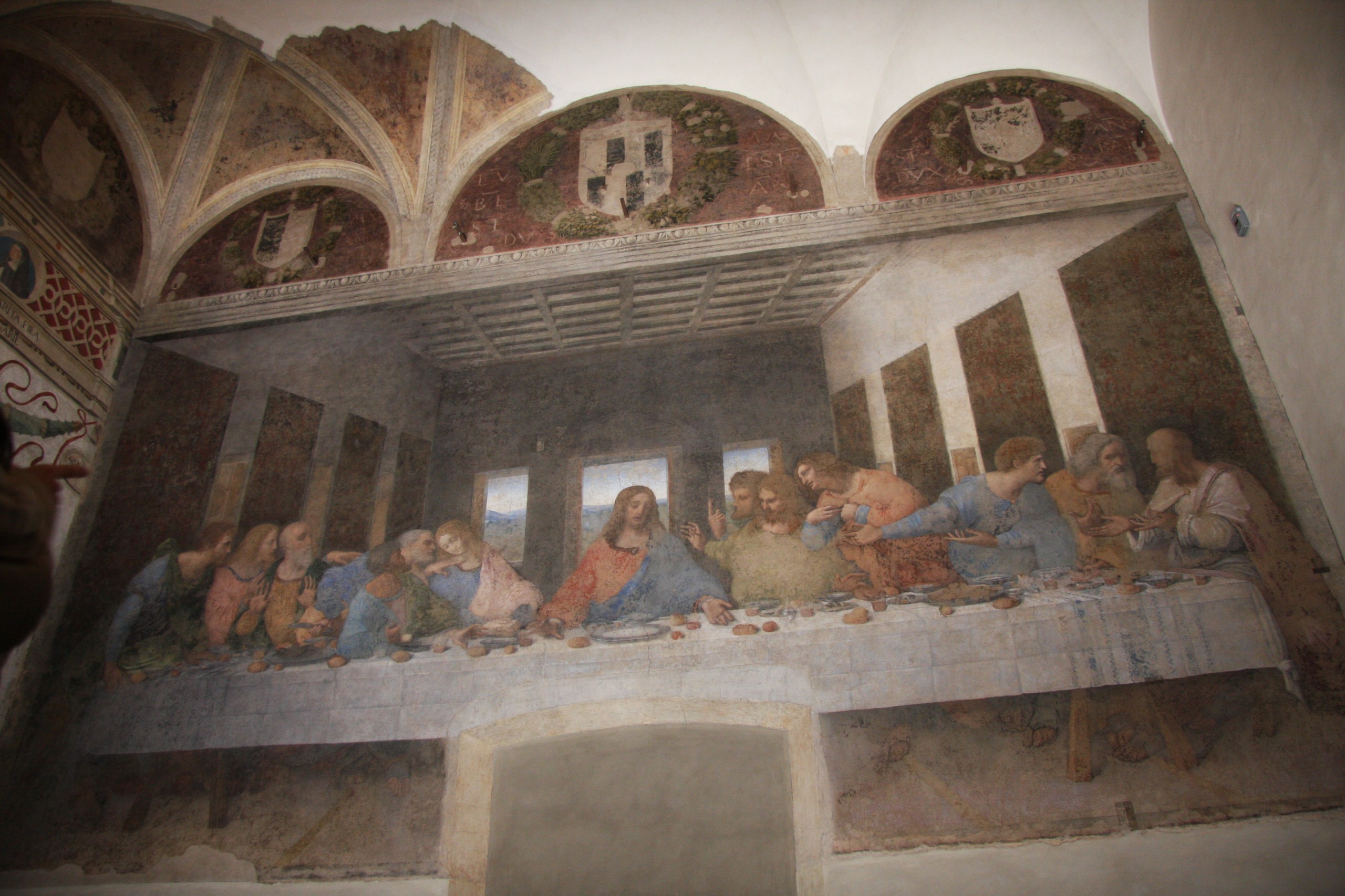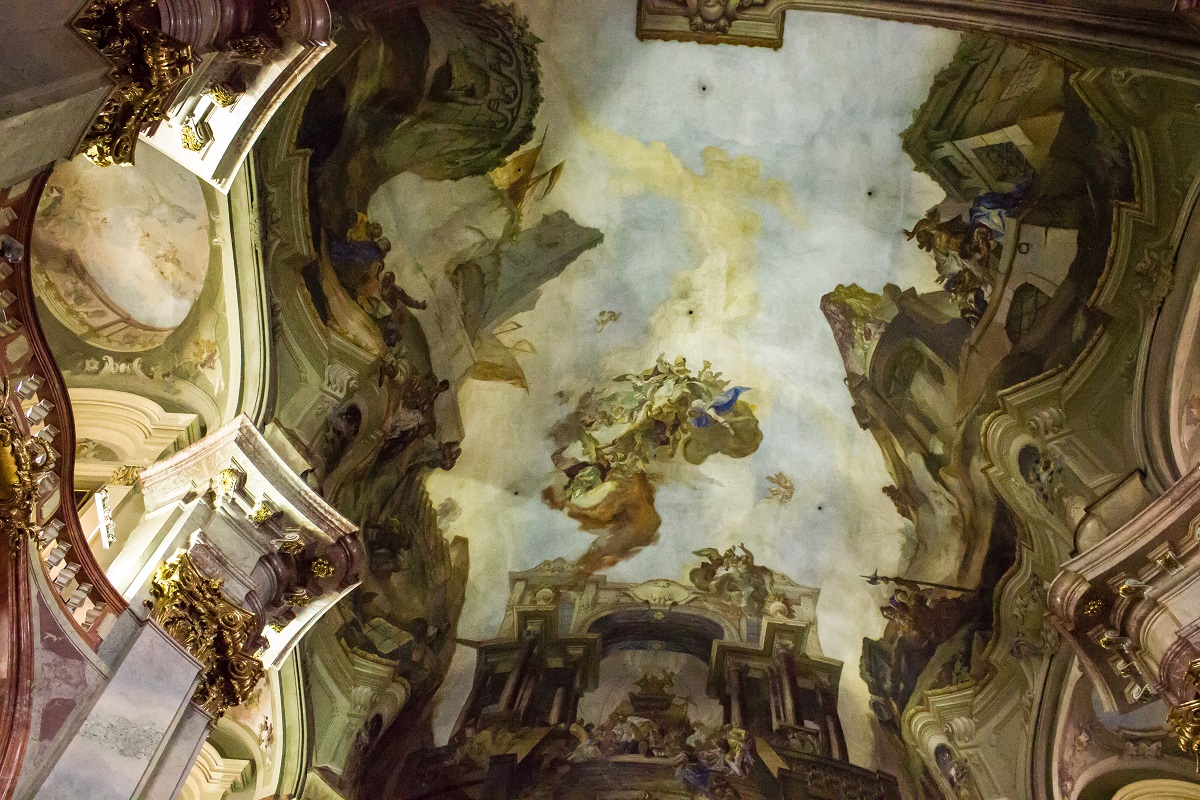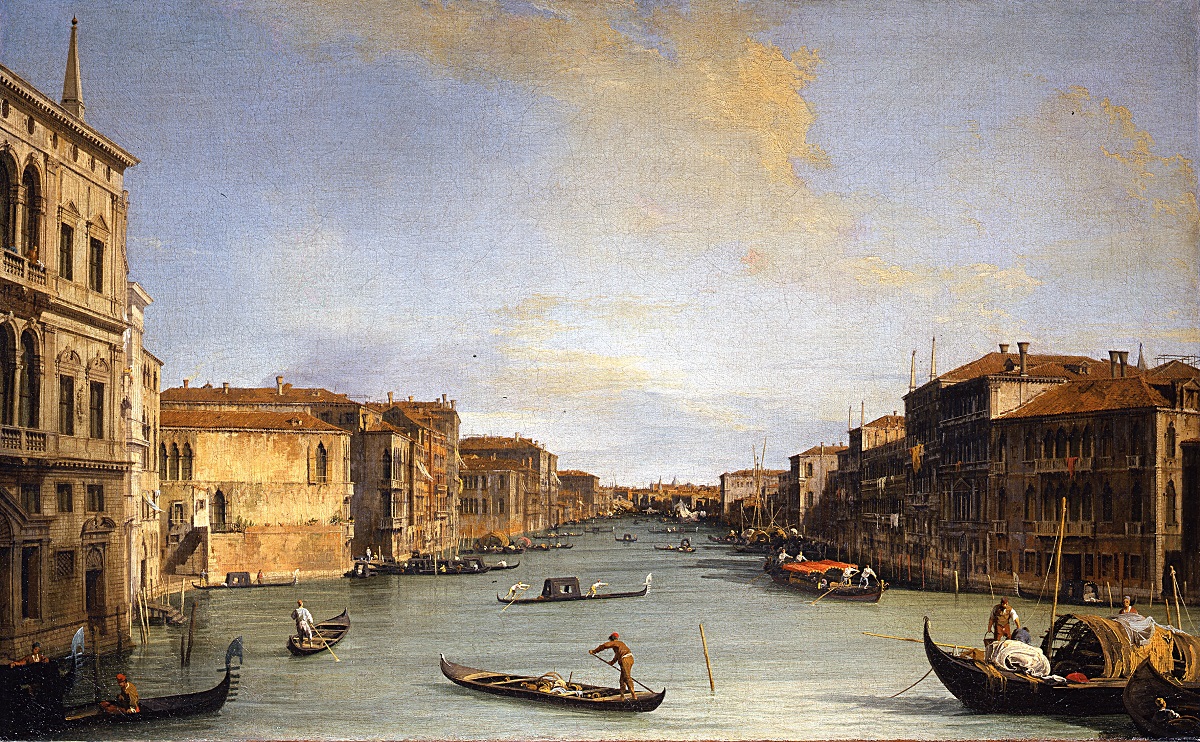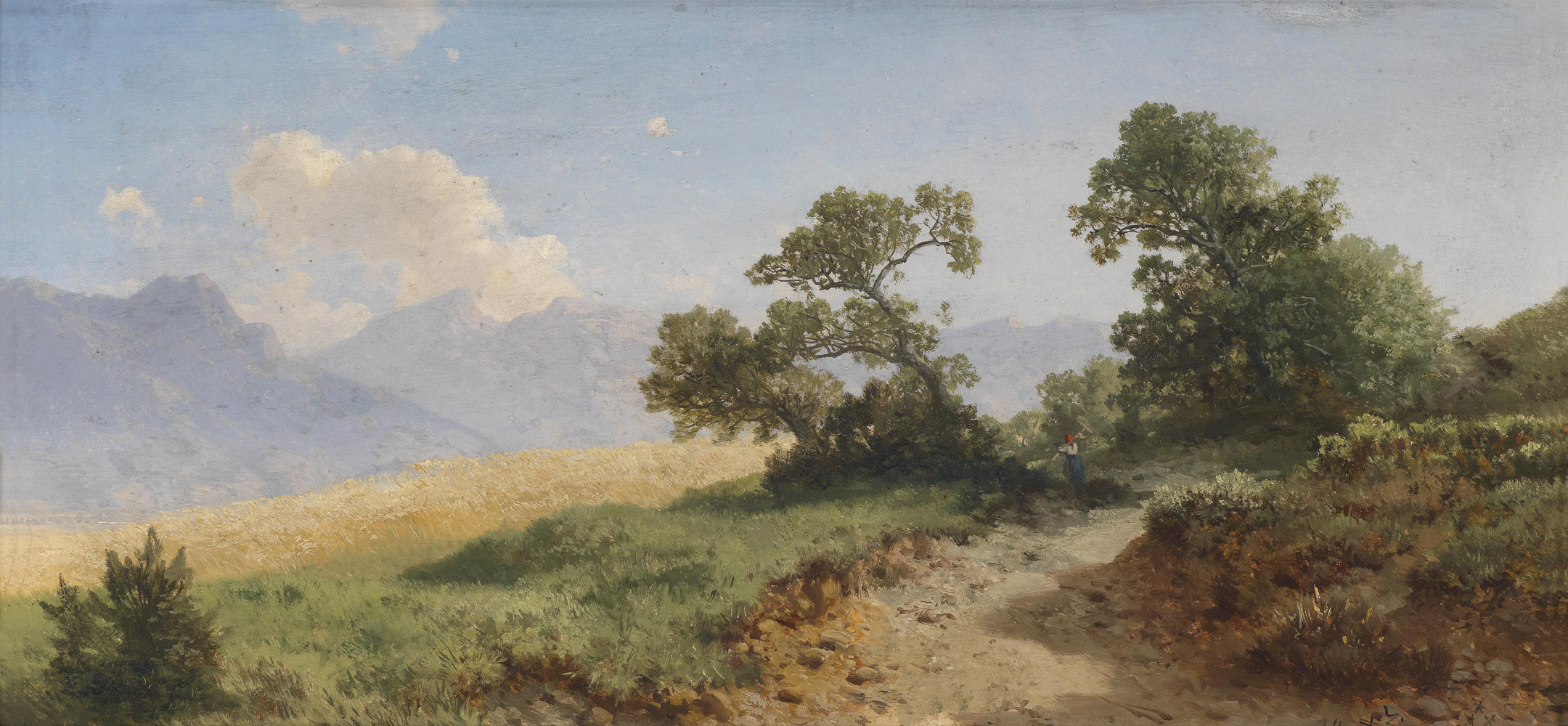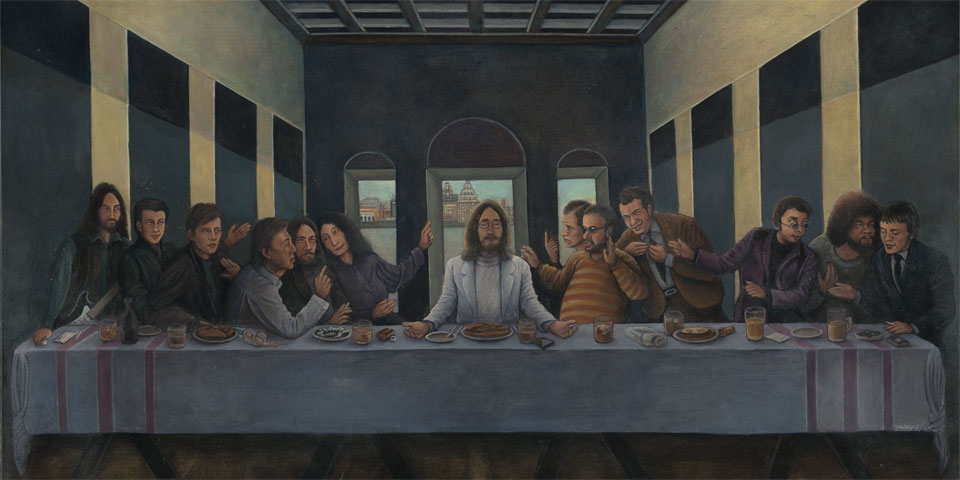In the first part of Jargons of the Art-world, we learned about 10 technical terms of the art-world. This second list counts ten more technical terms of art-world.
1. Ubiquitous Gaze
In old horror movies, there would be at least one scene in which a portrait of a suspicious woman in a dark room with a little light focusing its eyes is there. The scene is supposed to create horror. I have never felt horror in those scenes but at least this art term Ubiquitous Gaze made me realize why directors often shows paintings as an element of horror.
Because, in those portraits, the eyes of the woman (or man) seems to be following us. Regardless to weather we are in room, the eyes always follows us. As if the woman really is keeping an eye on us. And being watched all the times is a creepy experience. You might have experienced the same thing in your own house with some portraits whose eyes always follows you at every corner of your room.
The most famous example is Mona Lisa.
Apart from her mysterious smile, her eyes are claimed to have the Ubiquitous Gaze. You can wiggle your head around your monitor. Go ahead.
2. Capriccio
Capriccio is the fantasy plus real world production of the art. It combines the real elements, places, monuments and buildings in a fantastical world which is not found in the real world. It is a representation of the artist’s fantasy about the real buildings and monuments.
This art-form is old. Giovanni Paolo Pannini (1691-1765) is considered as one of the first proponents of the art. It is just a pure re-imagination of the real world in aesthetic arrangements. In the picture below, the placement of coliseum and remains of buildings in a more natural environment is factually wrong as the coliseum is situated in Rome. But, putting the facts aside, this branch of art concentrates on beauty over the facts.
So, sometimes you could see some landscapes which you would find a little awkward due to the wrong placements, but be sure next time when you see such painting, that is also a widely accepted art-form.
3. Fresco
Frescoes are one of the oldest paintings. Frescoes are executed on walls, ceilings or any surface which can’t be moved- mostly walls of a building. Graffiti could be called as the modern frescoes as technically they are both same. They are both applied on walls, but graffiti haven’t got enough respect as much as frescoes. Because, the frescoes are used mostly in churches or royal palaces to display the glorious past of the king or -more commonly- the biblical figures and events. Whereas, the graffiti is a street-art and uses sprays.
Fresco falls apart from the other wall-paintings (e.g. cave paintings) is that they are made by applying fresh lime plaster on the surface at first. The color gets absorbed in the plaster and it becomes a part of the wall. So, now the painting executed in such a way becomes the part of the wall. Looking at such fresco first time, you would think that the painting must have been made when the building was in construction.
That’s how the frescoes distinguish from the other wall or permanent surface paintings. And the reason to call them fresco is because the colors are applied on fresh plaster, and in Italian fresco literally means, Fresh.
Here is the world’s most popular fresco:
You recognized it, right?
It is The Last Supper by Leonardo da Vinci – the most seen as well as most controversial fresco due to some recent books and films.
So, that’s the fresco-art.
4. Mural
A mural painting is the head of the wall-painting family. It includes cave-paintings, frescos, Marouflage (which comes later in the list), the wall-paintings in your house or even the graffiti are technical a part of the Mural painting.
The reason is clear in the definition of the Mural painting-
“A painting or other work of art executed directly on a wall.”
–or on any permanent surface, to be more specific.
Some of you could argue that the regular paintings could be technically called as the fresco because once the painting is done; you can’t remove the painting and apply it on other surface. But, here what the definition of the mural is say. In mural paintings, the surface itself is unmovable or fixed at one place. That’s what Mural means.
Another, attractive feature of Mural is that the surface or the area on which the mural painting is being made, could be used as a part of the painting itself. Here is an example:
In the painting, the real pillars of the building are also used as the pillars of the fictional structure painted in the ceiling. So, this is how in mural paintings, the real surroundings could be incorporated as a part of the painting.
So, murals are basically any type of paintings executed on the walls, ceilings or any permanent surface.
5. Marouflage
Just like Frescoes, Marouflage is another type of Mural paintings. The difference between a Fresco and a Marouflage is that first it is painted on a regular canvas and then the canvas is permanently affixed on a wall or a ceiling. That’s the only significant characteristic of a Marouflage. It is a 3000 year old technic. The notable marouflaged painting is Madonna of the rocks by Leonardo da Vinci.
6. Modello (Maquette, Schizzo and Ricordo)
Modello are the miniature version of any big art-work commission. They are the reference for the bigger, final version. In every art-form, the modello were extensively used and were called by different names in any respected art-form.
Maquettes were little models for a sculpture. Maquettes are generally rough drafts so they are not detailed or finalized as the real commission would be. They are just an overview for the final sculpture.
Schizzo are similar to cartoons but it differs in terms of execution. Schizzo is a French word for sketch, meaning the first draft for any painting idea drawn roughly on paper is called schizzo. While the cartoons are the full-fledged, color full and real painting but just are small and are not final production.
Ricordo – this Italian word was used in renaissance period, when many big workshops existed for big commissions and any type of artistic works. Those workshops kept a miniature of their every delivered commission just for their records. And those just for the record miniatures are called Ricordo in Italian.
7. Veduta
The definition of the Veduta (Vedute in plural) paintings says that they are the large scale, intensely detailed and factually correct vistas of any city or landscape. They are a part of landscape paintings.
Veduta are more precise about the factual correctness. They don’t include any imaginary or fantasied elements to the scene, like the Capriccio does. Veduta are more about depicting the scenery in its most raw conditions with real details. It is almost like a photograph, but just the scene is captured by paints, brushes on a canvas, in more cumbersome way than the simple camera-clicks.
Veduta have been very much important that anyone could think. Distorting a scene and depicting it in one’s own way is comparatively easy against Veduta, because the critics have the real reference, the real place to compare the painting with. And in such case, there are more chances of finding a factual or archaeological or any other kind of error. Whilst those “stylized” paintings can’t be accused for incorrectness, because the painter can impose the error as his style.
But, a Veduta painting requires precise and detailed attention and obviously a top-notch ability of drawing and painting.
8. Staffage
Staffage are the accessory items in any painting.
In the current painting, can you see a lady walking between the trees? It is called staffage. The main idea or the emphasis of the painting is the beauty of the landscape. But, just to add a human touch or to indicate that the place is inhibited by human nearby, the lady is added there. It is just a little thing in the picture but, makes a whole lot difference. Without the figure, the landscape could look empty.
A staffage item could be anything. From a person to the remains of a monument, as long as it is not emphasized as the main attraction of the scene.
As they say, details make difference and staffage does the same thing. The small accessories added in the picture make difference in our thinking and orientation about whole picture.
9. Impasto
Impasto paintings are regular painting with a very thick layer of paint instead of the diluted paints mixed with oil or water. The paint is so thick that you can see the rough surface of the paint. The brush-stroke and the speed of the brush-stroke are clearly visible.
Impasto painting technique helps the artist to create certain impressions which is hard to achieve in normal painting relatively. The roughness of the surface gives the painter an extra hold on the light being projected on it and the thick paint could be conveniently used to create certain textures like folds and torsion of the clothes. This technique is old as Rembrandt, Titian and Vermeer and is being used vastly.
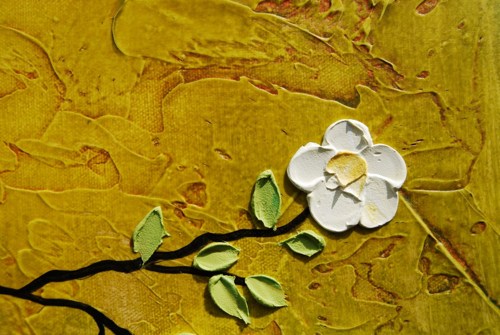
This is a close-up shot of an impasto painting. The color is very thick and the shadows under the flower and leaves are not painted but are actual shadows of the bulged paint on the canvas. It almost creates a three-dimension work of art and is similar to another art-form, relief, which is a sculpture technique.
As much deeper you dig into the arts you realize that there are many blends and overlaps of the different arts in each other and those facts change your orientation about the regular sculptures and paintings.
10. Pastiche
Pastiche is an imitation of any artwork. It is present in visual arts, literature and music, because a pastiche is a recreation of great work. But, instead of mimicking the artwork, pastiche celebrates the mimicked art-piece.
The painting is imitating The Last Supper by Leonardo da Vinci. It is executed by an artist called Victor Bonderoff.
Painting has just used the similar set of the Leonardo’s painting and not mimicking it. Instead with the similar set, artist has tried to relay his own message about the Beatles centering John Lennon in the middle.
The second part of the Jargons of the Art-world finishes here. Hope you learned more about the terminology of the art-world. You can read the third part of the series on our website.

 (1 votes, average: 4.00 out of 5)
(1 votes, average: 4.00 out of 5)